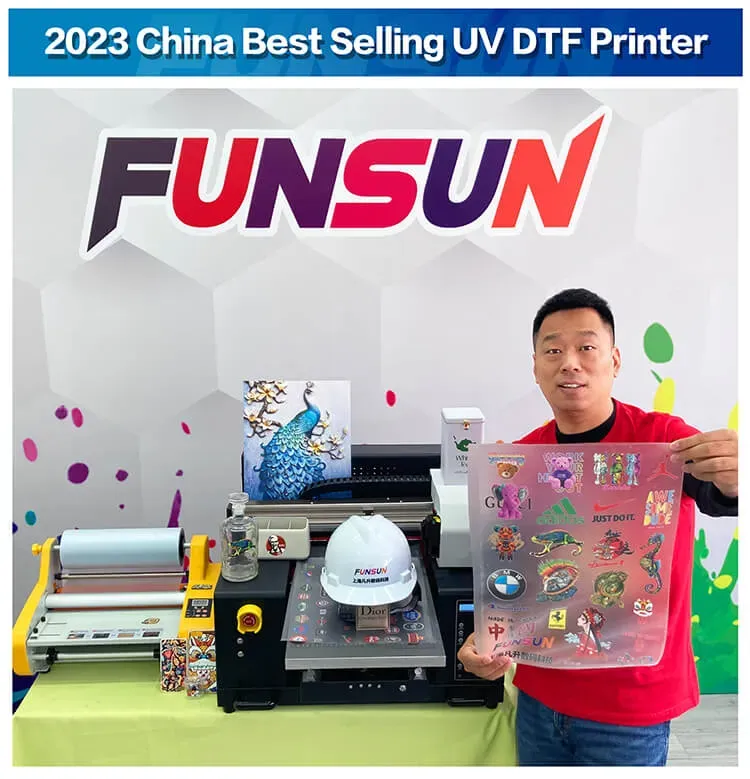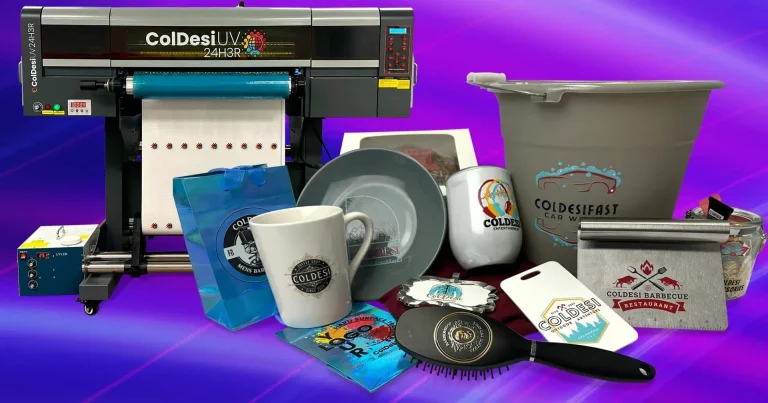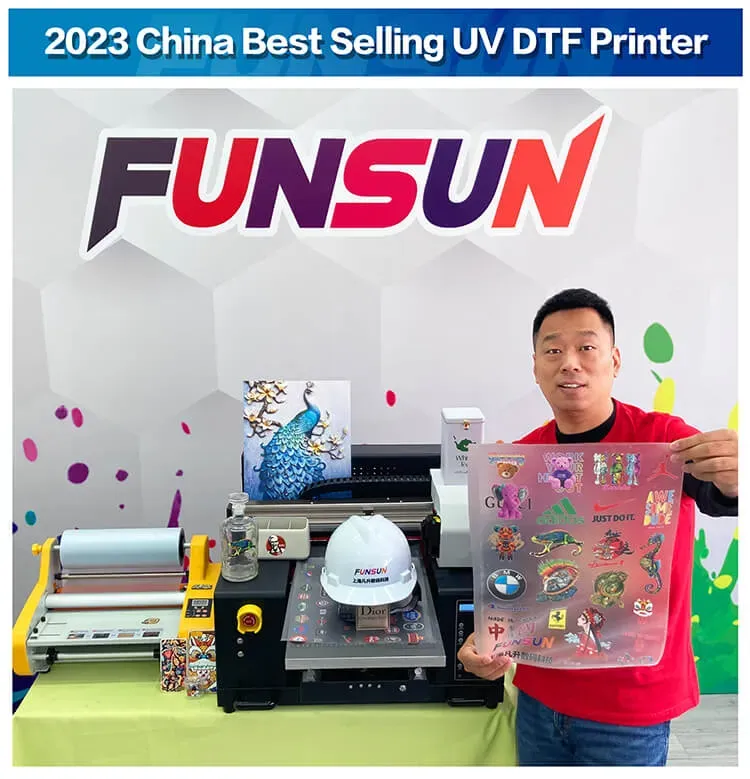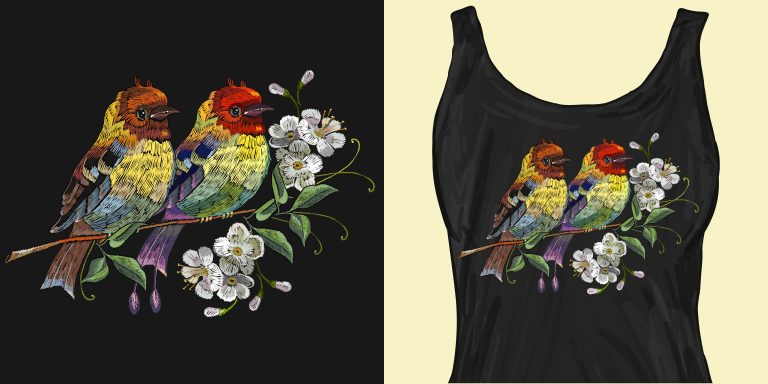UV DTF printing: Trends, Innovations, and Opportunities
UV DTF printing delivers a compelling blend of speed, color fidelity, and versatility for textiles. In this approach, UV-curable inks are laid down on a transfer film and heat- or pressure-transferred to fabrics, enabling on-demand customization for both small brands and large manufacturers. The curing is rapid under UV exposure, producing prints with strong opacity, crisp detail, and durable performance after washing. As the market tracks UV DTF printing trends, buyers also weigh UV DTF technology and the overall ROI, including the cost of a UV DTF printer. When compared with UV DTF vs DTG, digital textile printing on diverse substrates often offers better opacity on dark fabrics and faster turnarounds.
A closer look at the ultraviolet-curable direct-to-film workflow reveals how LED-curing, transfer films, and textile substrates come together to enable print-on-demand fashion and home textiles. Rather than direct ink on fabric, this approach relies on a film that carries the image, then translates it to screen-like clarity and wash resistance when heat-pressed. From an LSI perspective, related terms such as UV-curable inks, white underprinting on dark fabrics, and media compatibility map to the same concept, helping search engines connect the topic to digital textile printing and on-demand manufacturing. As brands explore alternatives, considerations include substrate compatibility, film adhesion, curing efficiency, and total cost of ownership, all framed by trends toward on-demand, localized production. In practice, selecting a setup involves evaluating print quality across fabrics, color-management workflows, and supplier ecosystems to sustain consistent results.
1) Understanding UV DTF Technology: What It Is and How It Works
UV DTF technology uses ultraviolet-curable inks printed onto a transfer film, which is then heat- or pressure-transferred onto a textile substrate. The UV curing occurs in an instant under LED UV lamps, enabling prints to move quickly from print bed to finished product. This process supports vibrant color, crisp detail, and excellent opacity across a broad range of fabrics, from light cottons to dark blends and synthetics, making it a compelling option in digital textile printing ecosystems.
Beyond visuals, UV DTF technology emphasizes durability. The cured ink forms a robust film that withstands washing, abrasion, and everyday wear. This combination of speed, durability, and substrate flexibility positions UV DTF printing as an attractive choice for on-demand production and short runs, where traditional methods can be slower or more costly. As part of digital textile printing, it integrates with existing workflows to deliver scalable, repeatable results.
2) UV DTF Printing Trends Shaping the Market: On-Demand, Personalization, and Substrate Expansion
A major driver of growth is the surge in on-demand customization. Consumers expect personalized apparel and accessories, and ecommerce platforms reward variable data printing. UV DTF printing aligns perfectly with this model because it supports small-batch production without the need for costly screens or pre-press investments, enabling rapid design iteration and faster time-to-market.
Substrate expansion is another key trend. Modern UV DTF inks and films are engineered to bond with a wider array of textiles, including cottons, blends, polyesters, and select synthetics. This broadens addressable markets to performance wear, athleisure, and home textiles. Sustainability is also shaping decisions, with LED UV curing consuming less energy and some workflows minimizing water usage compared to alternative transfer methods.
3) UV DTF vs DTG: Pros, Cons, and Use-Case Scenarios
UV DTF printing offers strong advantages in color fidelity, opacity, and durability, particularly on dark fabrics where a dense white underbase is achievable before applying vibrant layers. Compared with direct-to-garment (DTG), UV DTF relies on a transfer film, which can yield crisper lines, sharper text, and more consistent results on a wider range of fabrics without heavy pretreatment.
However, UV DTF can involve higher initial capital and ongoing consumable costs (films, inks, and curing energy). The workflow can be more complex, requiring careful handling of media and precise curing parameters. For many brands, the choice comes down to run length and substrate variety: for small runs with fast turnarounds, UV DTF can outperform traditional DTG; for very high-volume flat-bed textile printing, DTG or other methods might be more cost-efficient at scale.
4) UV DTF Printer Cost and Total Cost of Ownership: Evaluating Investment
The UV DTF printer cost is a central consideration when evaluating total cost of ownership. In addition to the upfront price, ongoing expenses for inks, transfer films, maintenance, and energy use play a critical role in profitability. LED UV curing technology tends to be more energy-efficient than traditional curing methods, contributing to lower operating costs over time, but every system has its own spare parts and service requirements.
A strong ROI often hinges on the ability to offer on-demand customization, reduce inventory risk, and shorten lead times. When forecasting ROI, consider print volume, substrate variety, speed, and consumable costs. Pilot programs can help quantify color accuracy, washfastness, and throughput, ensuring the business case for UV DTF investments is grounded in real-world performance.
5) Substrates and Market Fit for UV DTF Printing
Substrate versatility is a core strength of UV DTF. Cotton-rich fabrics, blends, and many synthetics respond well to this workflow, allowing brands to balance brightness, washfastness, and hand feel. Selecting the right substrate should align with the end-use, whether fashion apparel, athletic wear, or home textiles. The ability to print on a broader range of fabrics enables hybrid product lines, such as customized cushions or decorative textiles, expanding market opportunities.
Color management remains essential for consistent results across orders and seasons. Building robust color profiles for each fabric type ensures brand fidelity, particularly for licensed designs or multi-channel campaigns where color integrity must be preserved across garments, bags, and home textiles. The substrate strategy, combined with reliable media ecosystems, helps sustain quality as product lines evolve.
6) Practical Implementation: Workflow, Quality Control, and Best Practices for UV DTF
A well-planned implementation starts with a pilot project across a small catalog to test performance on multiple fabrics. Key measurements include color accuracy, opacity, washfastness, and hand feel after curing. Assessing throughput by timing the full cycle—from print to finish—helps compare UV DTF with existing methods like DTG or sublimation for those designs.
Efficient operations depend on an integrated workflow: color management, RIP settings, fabric handling, and post-print finishing need to be standardized. Safety considerations, including proper ventilation and chemical handling guidelines, should be part of any installation. Documented SOPs for each fabric type, regular calibration, and ongoing maintenance (lamps, inks, films) support consistent results and scalable production.
Frequently Asked Questions
What is UV DTF technology and how does it work?
UV DTF technology refers to ultraviolet-curable Direct-to-Film printing. In this process, UV-curable inks are deposited onto a transfer film and immediately cured by UV light. The film is then heat- or pressure-transferred onto a textile, delivering vibrant color, crisp detail, strong opacity, and fast production times. The workflow also enables a robust white underbase on dark fabrics and durable prints that resist washing and abrasion.
What are UV DTF printing trends shaping the market today?
Key UV DTF printing trends include on-demand customization, expanding substrate versatility (cottons, blends, polyesters, and some synthetics), and improved white-printing on dark fabrics. Sustainability and energy efficiency via LED UV curing, along with automation in color management and workflow, are also shaping adoption of UV DTF printing.
What is the UV DTF printer cost and what should I consider for ROI?
UV DTF printer cost is the upfront investment to acquire the printer, plus ongoing expenses for inks, films, maintenance, and energy. LED UV curing tends to be more energy-efficient, reducing operating costs. ROI depends on print volume, substrate variety, throughput, and the ability to offer on-demand customization with lower minimums and faster turnaround.
UV DTF vs DTG: which is better for my textiles?
UV DTF vs DTG compares transfer-film-based UV DTF printing to direct-to-garment (DTG) printing. UV DTF excels with opaque white underbases on dark fabrics, strong color on a wide range of substrates, and fast turnaround with lower setup for short runs. DTG is often preferred for high-detail art on light fabrics with direct printing, but may require pretreatment and can have longer setup for dark garments.
How does UV DTF fit into digital textile printing strategies?
UV DTF fits digital textile printing by enabling on-demand, short-run production with broad fabric compatibility and rapid color updates. It complements RIP-based color management, cloud libraries, and automated workflows, reducing inventory risk and speeding time-to-market in digital textile printing strategies.
What factors affect durability and color quality in UV DTF printing?
Durability and color quality in UV DTF printing depend on substrate selection, ink and film compatibility, curing parameters, and the effectiveness of the white underbase on dark fabrics. Robust color management (ICC profiles, calibrated RIPs), proper curing, and routine maintenance all contribute to consistent washfastness, abrasion resistance, and color fidelity in UV DTF printing.
| Key Topic | Summary |
|---|---|
| What UV DTF printing is and how it works | UV-curable inks on transfer film are printed and instantly cured with UV light; the print is heat-/pressure-transferred to fabrics, delivering vibrant color, opacity, and broad substrate compatibility. |
| Benefits | Speed, durability, and substrate flexibility enable on-demand production and short runs with strong color and wash resistance. |
| Current trends | Rising on-demand customization, small-batch production, broader substrate support, white printing on dark fabrics, and sustainability considerations. |
| Key innovations | Advances in print-heads, curing lamps, film/ink chemistry, and software (RIP, color management, automation) driving quality and efficiency. |
| Practical considerations | Total cost of ownership includes upfront printer cost, ongoing inks/film/maintenance, energy use; quality depends on substrate, curing, and safety practices. |
| ROI and implementation | Pilot projects, testing for color, opacity, and washfastness; ROI hinges on volume, substrates, speed; enables on-demand revenue and inventory gains. |
| Substrates and market fit | Cotton-rich fabrics and blends perform well; substrate choice should match end-use (fashion, athleisure, home textiles) with potential hybrid products. |
| Color management | Develop robust fabric-specific color profiles; manage multi-channel campaigns and licensed designs to maintain consistency. |
| Case studies | Small fashion labels, event-merch campaigns, and interior textile applications demonstrate on-demand, rapid-turnaround capabilities. |
| Choosing the right setup | Assess resolution, white-ink performance, substrate compatibility; ensure strong support networks, test fabrics, and budget for inks/films/lamps and updates. |
| Best practices | Structured workflows, pre-press color matching, curing protocols, clean heads, SOPs, and periodic color/ washfastness audits for repeatable results. |
| Future outlook | Growth driven by on-demand, personalization, broader media compatibility, and ongoing innovations in ink, film, and automation. |
Summary
Conclusion paragraph will follow the table.







